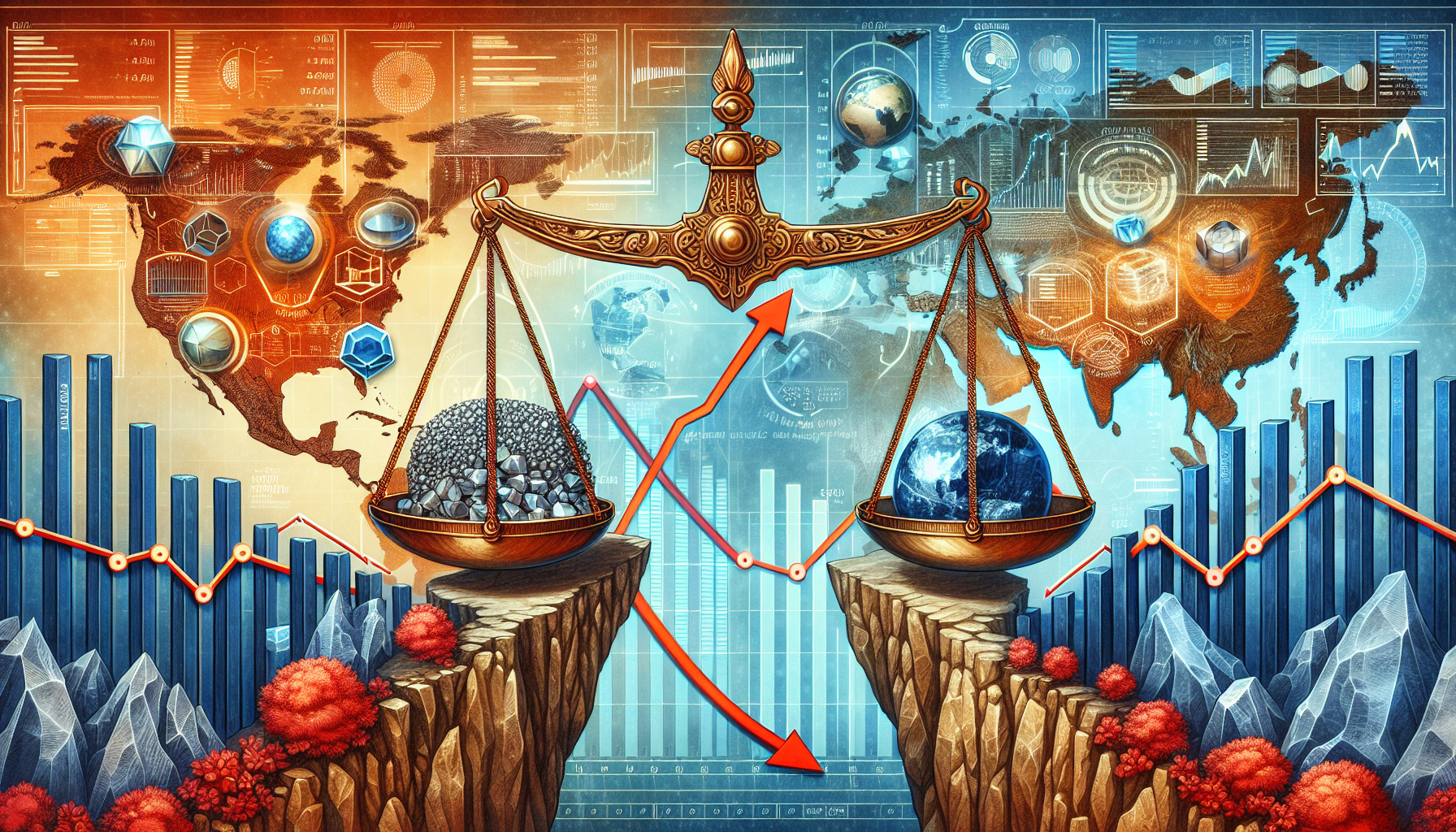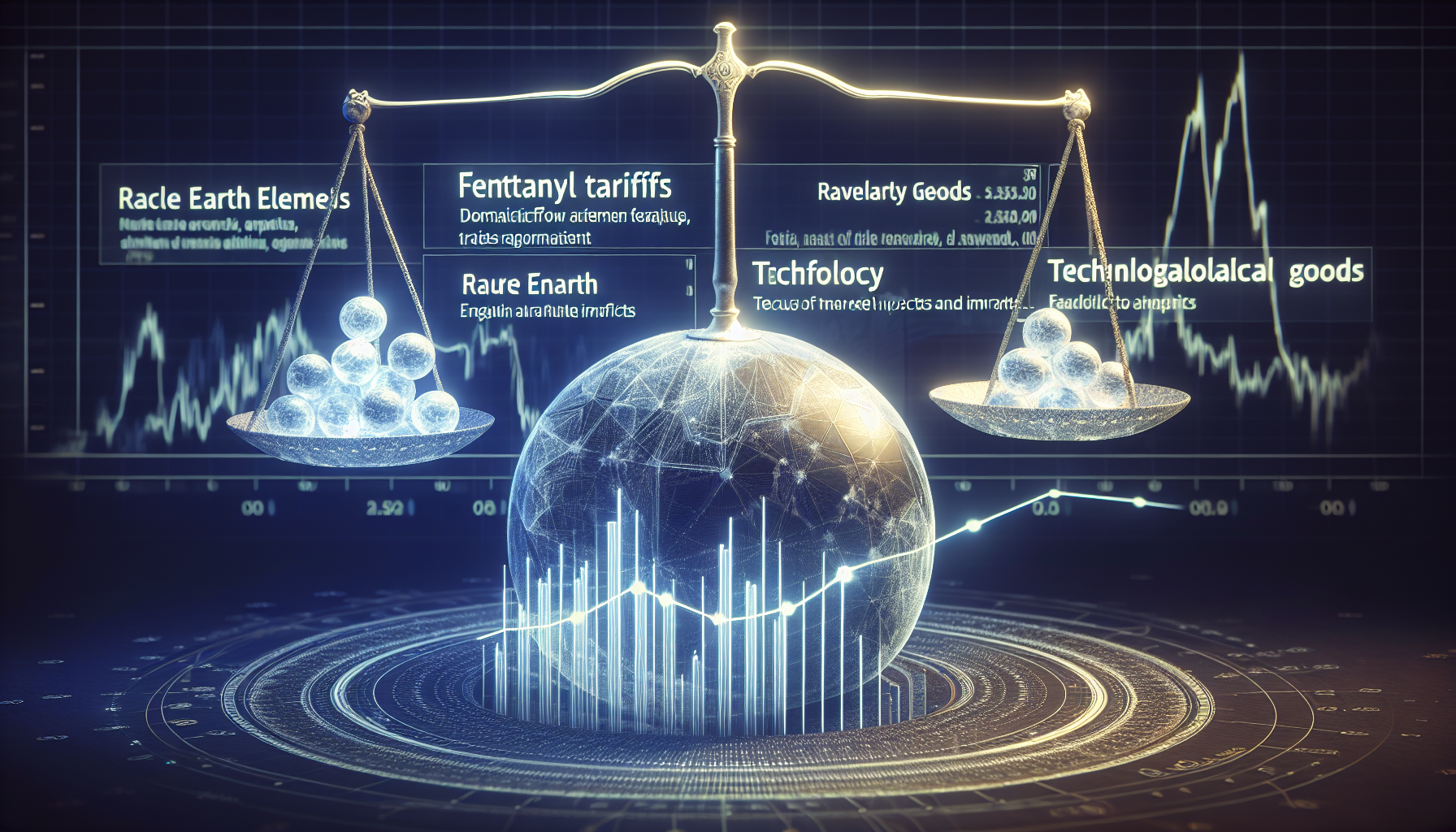A Strategic Thaw: U.S.-China Trade Relations Shift on Fentanyl and Rare Earths
In a significant de-escalation of economic tensions, the leaders of the world's two largest economies have announced a series of targeted agreements aimed at addressing critical points of friction. The meeting between U.S. President Donald Trump and Chinese President Xi Jinping in South Korea has yielded immediate results, signaling a potential, albeit fragile, pivot towards cooperation on specific, high-stakes issues. The accords, focusing on the opioid crisis, strategic minerals, and agricultural trade, represent a calculated exchange of concessions designed to benefit domestic interests in both nations while leaving broader strategic rivalries unresolved.
A Calculated Exchange: Tariffs and Trafficking
One of the most immediate outcomes of the summit was President Trump's announcement of a 50% reduction in fentanyl-related tariffs on Chinese goods, lowering the levy from 20% to 10%. This move directly addresses what analysts have described as a "key Chinese grievance." For years, Beijing has argued that its efforts to curb the export of fentanyl precursors—the chemical building blocks for the synthetic opioid—have gone unacknowledged by Washington, which has instead focused on punitive tariffs.

This tariff cut is not a unilateral gift; it comes with a clear quid pro quo. In return, the Chinese government has committed to intensifying its efforts to "work very hard to stop fentanyl" from being trafficked into the United States. This agreement reframes the issue from one of pure punishment to one of shared responsibility, a diplomatic win for Beijing. Furthermore, China has agreed to resume purchases of American soybeans and other agricultural products, providing a vital economic lifeline to a key U.S. political constituency that has been heavily impacted by the trade war.
The Rare Earths Accord: Securing the Tech Supply Chain
Perhaps the most strategically significant announcement was the settlement of the "rare earths issue." President Trump revealed a one-year agreement on rare earths and critical minerals, which will be subject to annual renegotiation. Rare earth elements are a group of 17 metals essential for manufacturing a vast array of modern technologies, including smartphones, electric vehicles, wind turbines, and advanced military hardware.
China dominates the global supply chain for these materials, controlling a vast majority of the world's processing capacity. This dependency has long been a source of anxiety for U.S. policymakers and defense officials, who fear that Beijing could weaponize its monopoly, as it has hinted in past disputes. The new rare earths deal, while light on public details, is designed to provide stability and secure access for American industry. The immediate market reaction was telling: China's CSI Rare Earths Industry Index jumped more than 2% on the news, reflecting investor confidence in continued Chinese dominance and stable demand.
Semiconductors and Strategic Ambiguity
The technological cold war between the U.S. and China also featured in the discussions, albeit with less concrete resolution. President Trump confirmed that the sale of Nvidia's chips to China was discussed, though he specified that the most advanced Blackwell chips were not part of the conversation. The statement, "They are going to be talking to Nvidia and others about taking chips," suggests a potential loosening of the strictest export controls, allowing sales of less sophisticated semiconductors. This would be a boon for U.S. chipmakers seeking to maintain market share while simultaneously ensuring China does not gain access to the cutting-edge technology crucial for artificial intelligence and military applications. The issue of Taiwan, a constant flashpoint, was notably absent from the talks, allowing both sides to sidestep one of their most divisive geopolitical fault lines.

The Power of Personal Diplomacy in a Tense Rivalry
The cordial tone surrounding the meeting was a deliberate departure from the recent rhetoric of confrontation. President Trump referred to Xi as an "old friend," while the Chinese leader emphasized that China's growth ambitions are compatible with Trump's "Make America Great Again" vision, stating the two nations should be "friends and partners." This personal rapport appears to have been a critical factor in facilitating a deal that many analysts considered unlikely. The shift was notable from Xi's previous meeting with former President Joe Biden, which highlighted "inevitable competition." This summit demonstrated that leader-to-leader diplomacy can still produce tangible outcomes, even amidst deep-seated systemic rivalry.
Beyond the Handshakes: The Fragile Nature of the Truce
While the immediate results are being hailed by some as "exceeding expectations," many experts urge caution. The agreements, though positive, are narrow and do not address the underlying structural issues at the heart of the U.S.-China economic conflict. Concerns about China's industrial overcapacity, state subsidies, and non-market economic practices—key drivers of the initial trade war—remain entirely unaddressed.
As Wendy Cutler of the Asia Society Policy Institute noted, the absence of progress on these fronts means the truce is inherently "fragile and tensions are certain to heat up again." The one-year term on the rare earths deal also introduces an element of annual uncertainty, making it a temporary patch rather than a long-term solution. The agreements function more as a tactical ceasefire, providing short-term economic and political wins for both leaders while leaving the fundamental battle over technological supremacy and economic influence for another day.
Conclusion: Market Implications for the Coming Weeks
The immediate market response to this diplomatic thaw will likely be a cautious sigh of relief, characterized by reduced volatility in sectors directly impacted by the announcements. In the short term, we can expect a rally in U.S. agricultural commodities, particularly soybeans, as China resumes its purchasing program. Similarly, companies in the rare earths supply chain and semiconductor industry may see boosted investor confidence.
However, the fragility of this détente means the optimism will be tempered. The core issues of the tech war and industrial policy remain unresolved, and any perceived backsliding on the fentanyl commitment or a breakdown in the rare earths negotiations could swiftly reignite tensions. For investors and market analysts, the next few weeks will be a period of watching for concrete follow-through: the volume of Chinese soybean orders, tangible data on reduced fentanyl precursor seizures, and the specifics of the Nvidia chip discussions. This is not a comprehensive peace treaty but a temporary armistice. The market will enjoy the respite, but it would be premature to assume the broader U.S.-China trade war is over. The underlying strategic competition ensures that this period of calm is likely just an intermission in a long-running geopolitical drama.

